Abstract
The problem oriented medical record (POMR) has proved to be very successful in providing a structure that helps doctors record their notes about patients, and view those notes subsequently in a manner that quickly gives them a good understanding of that patients history. This approach has been validated by the American Institute of Medicine. With the increased use of computer systems that implement the POMR by doctors, the limitations of this structure have become apparent, and there is clearly scope for developing the model further to improve the quality of the data recorded, and adding meaning to it. This paper describes some of the limitations of the POMR, and discusses a number of areas in which it may be extended. Crucially, this is done in a manner which is both implementable, and usable. The extensions explored include some types of entity including encounters, episodes and subproblems; and an alternative view-the Timeline. The terminology used for the extensions is clarified. Mechanisms by which these extensions have been implemented are described. Ways in which systems can manage these extensions automatically are suggested. Such implementations are constrained by the need not to allow the demands of the computer to intrude into the patient encounter. They are also constrained by the requirements for reporting by professional and governmental institutions, and by what is pragmatically feasible in software and hardware.
Full text
PDF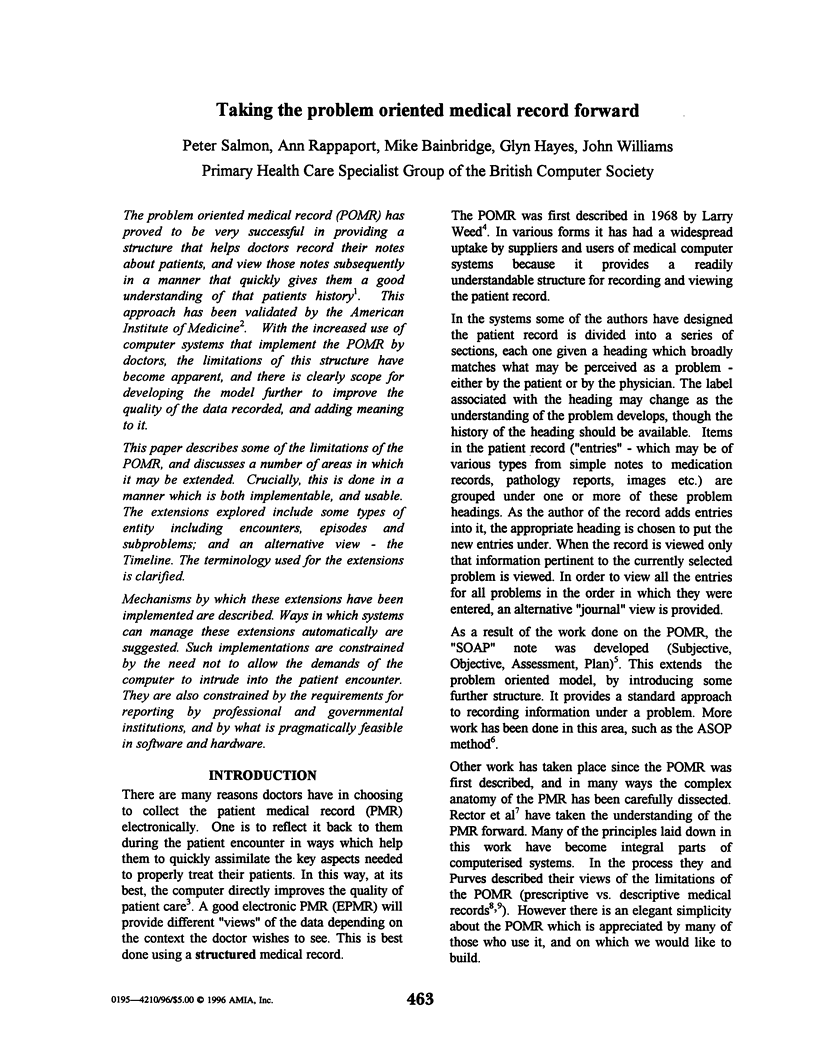
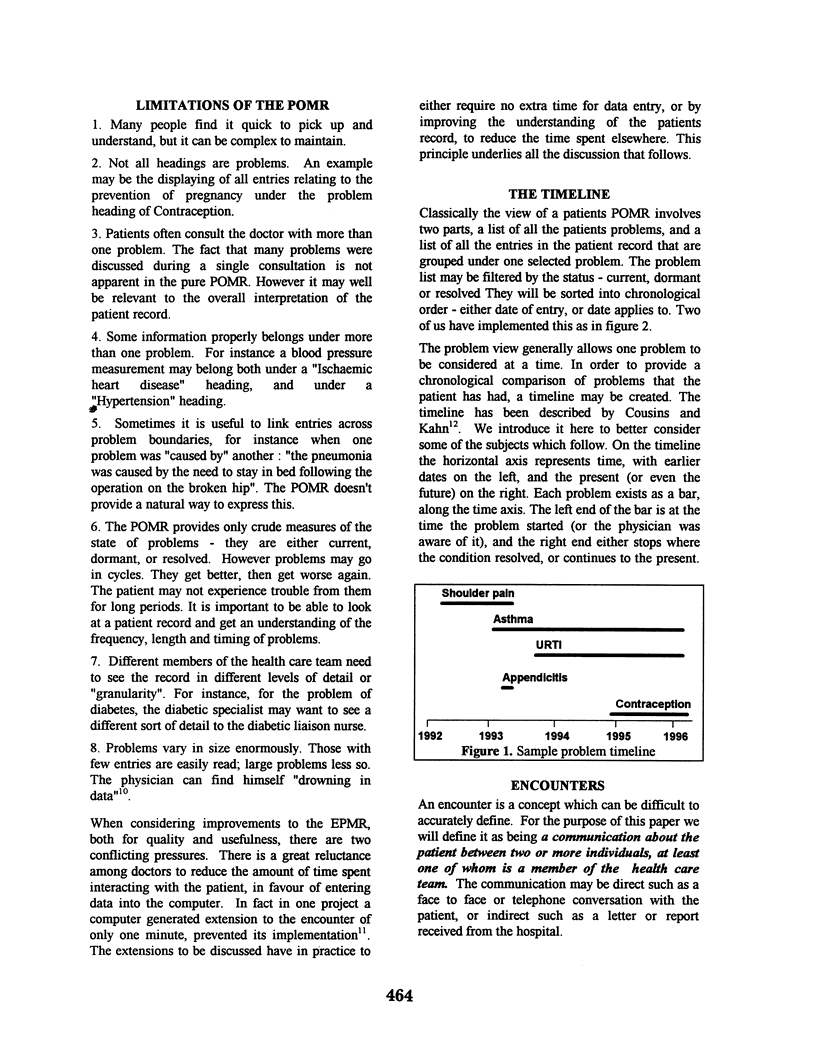
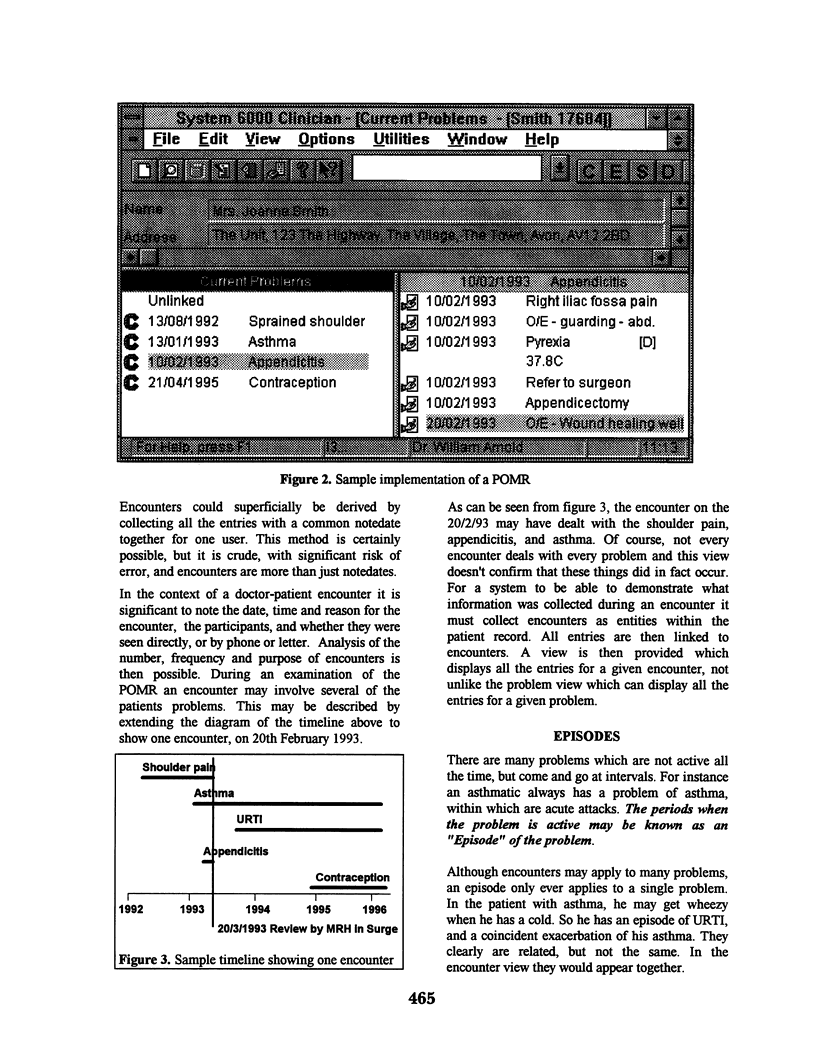
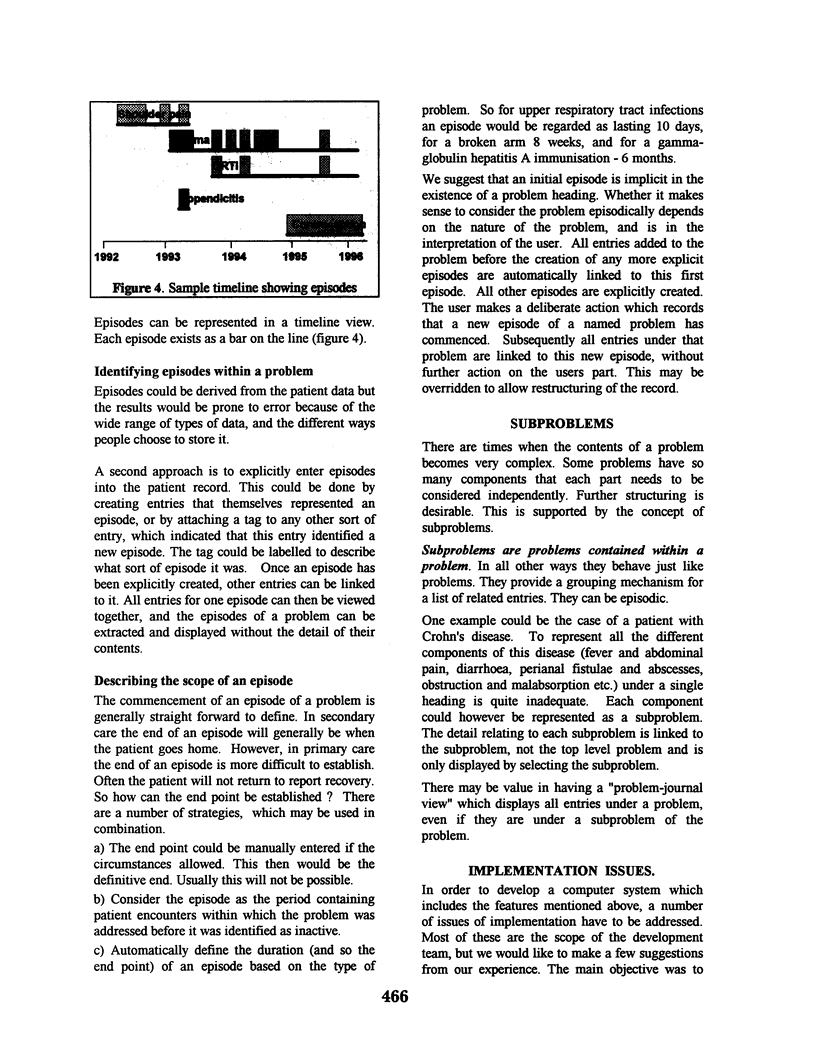
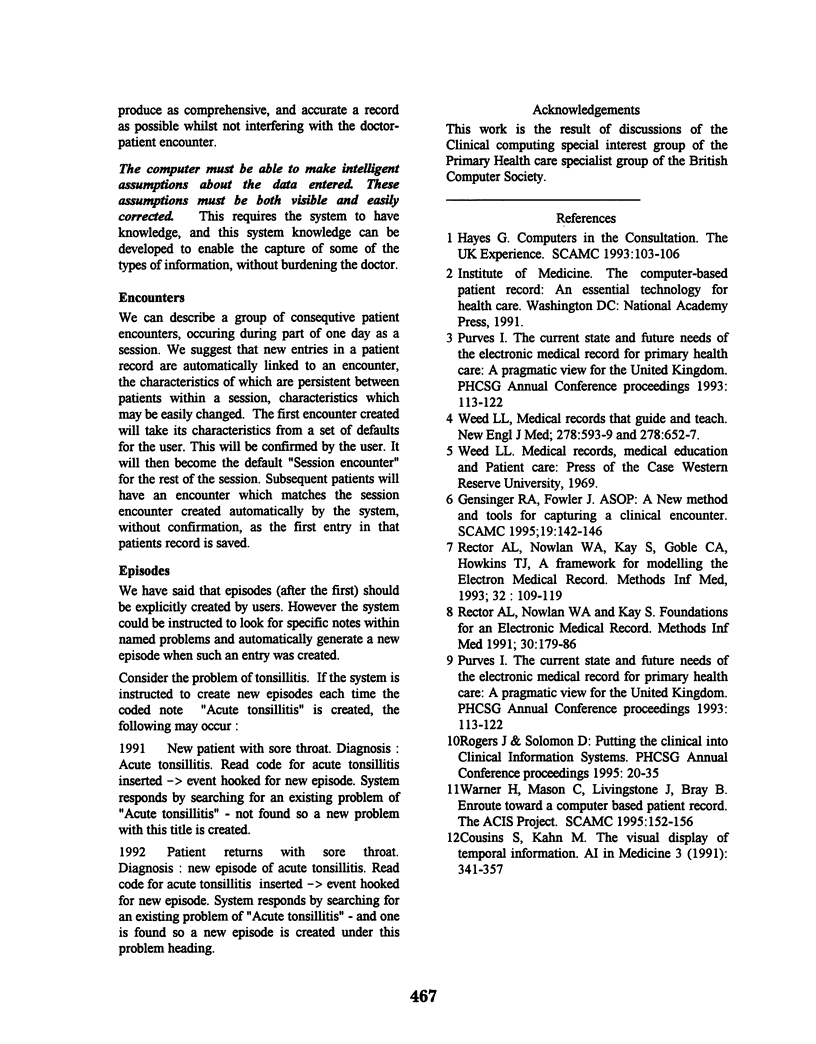
Selected References
These references are in PubMed. This may not be the complete list of references from this article.
- Gensinger R. A., Jr, Fowler J. ASOP: a new method and tools for capturing a clinical encounter. Proc Annu Symp Comput Appl Med Care. 1995:142–146. [PMC free article] [PubMed] [Google Scholar]
- Hayes G. M. Computers in the consultation. The UK experience. Proc Annu Symp Comput Appl Med Care. 1993:103–106. [PMC free article] [PubMed] [Google Scholar]
- Rector A. L., Nowlan W. A., Kay S. Foundations for an electronic medical record. Methods Inf Med. 1991 Aug;30(3):179–186. [PubMed] [Google Scholar]
- Rector A. L., Nowlan W. A., Kay S., Goble C. A., Howkins T. J. A framework for modelling the electronic medical record. Methods Inf Med. 1993 Apr;32(2):109–119. [PubMed] [Google Scholar]
- Warner H. R., Guo D., Mason C., Livingston J., Bray B. E. Enroute toward a computer based patient record: the ACIS project. Proc Annu Symp Comput Appl Med Care. 1995:152–156. [PMC free article] [PubMed] [Google Scholar]
- Weed L. L. Medical records that guide and teach. N Engl J Med. 1968 Mar 21;278(12):652–concl. doi: 10.1056/NEJM196803212781204. [DOI] [PubMed] [Google Scholar]


